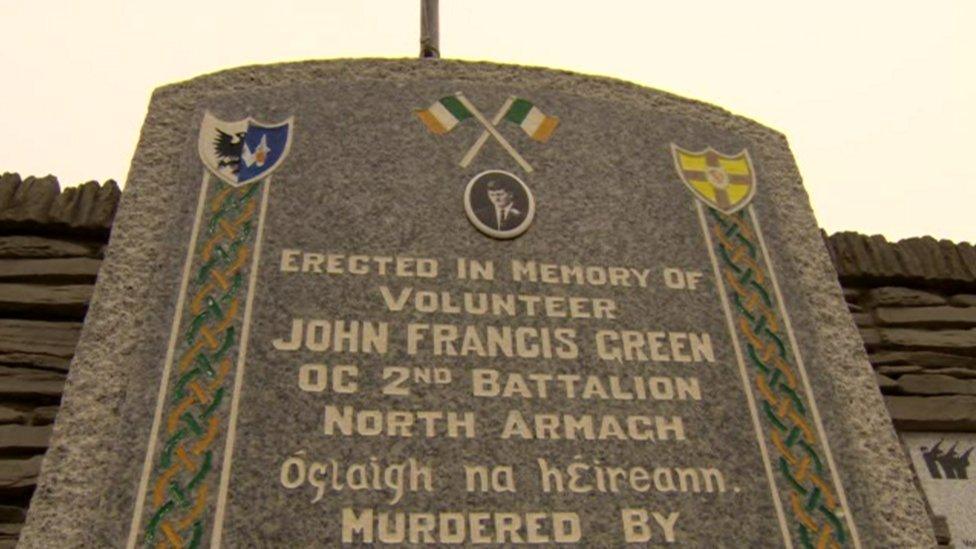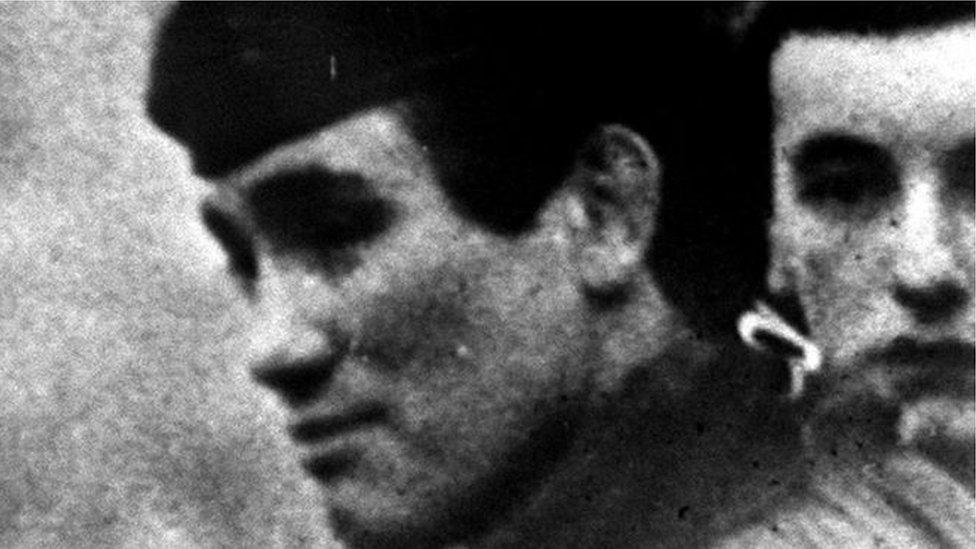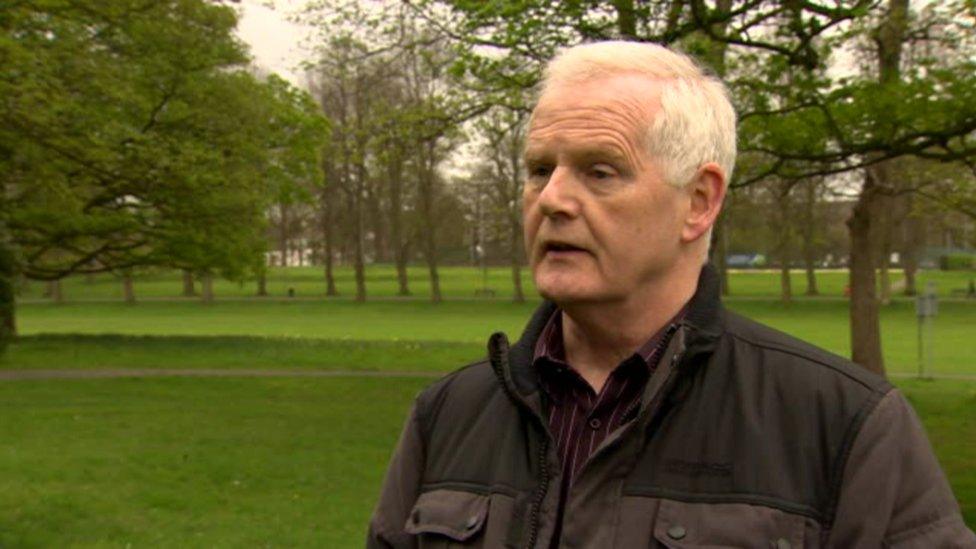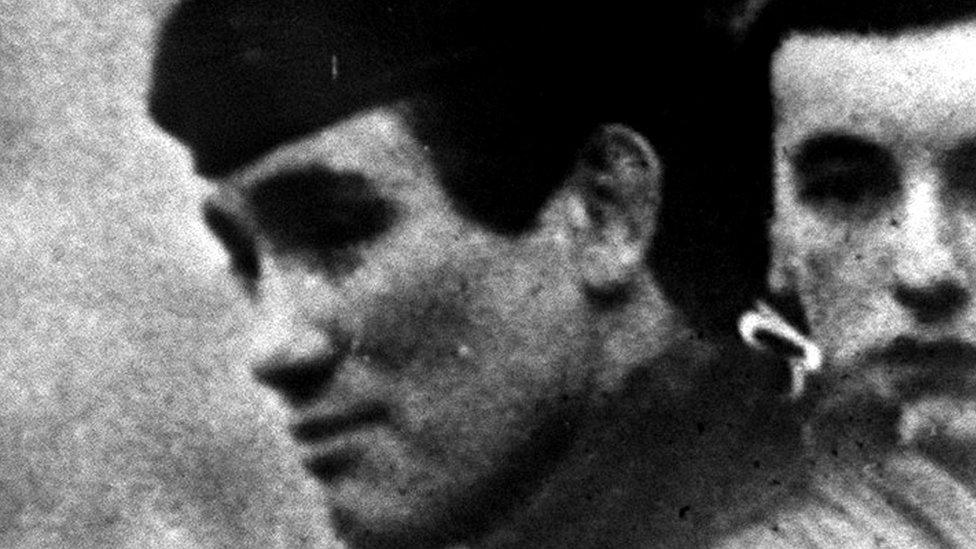Former RUC officer: No evidence Nairac killed IRA member
- Published
Leo Green urged anyone with details of Captain Nairac's remains to come forward
A former police officer who investigated a claim that murdered British Army Captain Robert Nairac assassinated a senior member of the IRA has said there was no evidence to support the allegation.
John Francis Green, an IRA member from Lurgan, was shot dead in a farmhouse in County Monaghan in January 1975.
The retired detective investigated the claim that Robert Nairac was involved.
He has offered to help the Ministry of Defence contest any future legal case.

IRA member John Francis Green was shot dead in a farmhouse in County Monaghan in 1975
The former police officer, who spent two years investigating the allegation, does not want to be named, but the BBC has verified his identity.
Earlier this year, a former army captain and military intelligence officer, Fred Holroyd, revealed that he has offered to give evidence about Robert Nairac's involvement in the killing in secret court hearings.
That evidence could potentially be used by the family of John Francis Green in future legal action against the government.
Mr Holroyd served in Northern Ireland from January 1974 until May 1975.

Captain Robert Nairac was accused of being behind the murder of John Francis Green in 1975
The UVF claimed it killed John Francis Green, but speaking to the BBC last year, Fred Holroyd insisted that Robert Nairac had confessed to the killing.
He said Capt Nairac gave him details of the guns used and showed him a photograph of the body he claimed to have taken minutes after the shooting.
That claim has been discounted by two Garda (Irish police) investigations.
Now, one of a team of six RUC detectives who investigated the claim has said it was proven to be false.
The man, who we have called Officer A, was a detective inspector at the time.

Former army captain Fred Holroyd has stood by his claim Robert Nairac was involved in the murder of John Francis Green
He interviewed Fred Holroyd over a number of days in County Down in 1983 shortly after he made the allegation to the police.
"During interviews Fred Holroyd produced the photograph he claimed had been taken by Robert Nairac within minutes of the killing," he said.
"I had it examined by forensic scientists in London. The analysis was that, based on separate discolouration rings of blood around the head, and considering the cold January weather, the photograph was more than likely taken 12 to 20 hours after the shooting, and not within minutes."
Officer A said a batch number on the photograph also supported claims by the Garda that one of their officers took it.
"This polaroid batch was traced by us to having been delivered from England to Dublin some time previous to the Garda Síochána for their specific use," he explained.
The former detective said the Garda told him they had taken photographs at the scene and given one to a senior RUC Special Branch officer based at Lurgan police station, where Fred Holroyd was also located at the time.
Officer A said Special Branch in Lurgan told him the photograph had been removed from a notice board in the station.
'I maintain my account'
But in a statement issued to the BBC by his lawyers, Fred Holroyd said he stands by his claim "that Green was assassinated by Capt Robert Nairac and others who were operating in the Republic of Ireland for the British Army".
He added: "I am happy to meet the retired RUC officer and for him and I to clarify this. However, I maintain my account."
The family of John Francis Green also remain convinced that Robert Nairac was involved in his killing.

Leo Green, a brother of John Francis Green, has called on anyone with information about the location of the remains of Robert Nairac to come forward
"We make our judgement call on the balance on probability," said his brother Leo Green, a former IRA hunger striker who spent 17 years in prison.
"I think it would have required a significant surveillance operation to first of all identify the location where my brother was staying, to know where he was on any particular night, to know that there was no-one else there and it was safe to mount an operation against him, and it was a cross-border operation.
"It would have required surveillance over a protracted period of time and I think that the only people with the capacity to do that at the time would have been the British intelligence agencies."
'Forbidden' from contacting family
Officer A said he wanted to contact the parents of Robert Nairac, who was abducted and murdered by the IRA in May 1977, to tell them he had discounted the claims Fred Holroyd had made publicly about their son.
But he said he was told he could not do so because of the Official Secrets Act.
"I thought they deserved to know what we had discovered and thought that would have comforted them, but I was forbidden from doing so," he said.
"They went to their graves with a huge question mark over their son's reputation. I don't think that was fair."
The body of Robert Nairac has never been found.
He was one of 16 people abducted, murdered and secretly buried by republicans during the Troubles.
The family of John Francis Green have appealed to the IRA to help a commission set up to search for the bodies of the Disappeared.
- Published26 January 2016

- Published1 April 2011